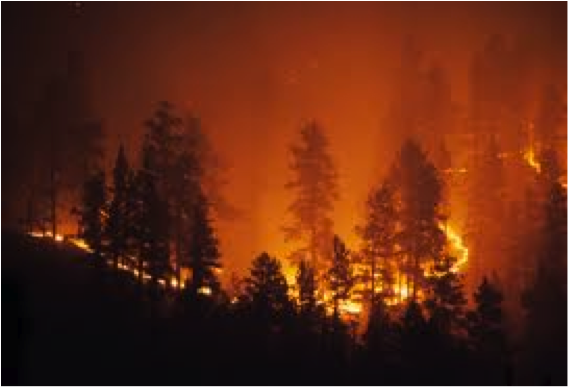 The triple-digit scorching heat that has plagued much of the U.S. this summer finally hit California. The recent wave of high temperatures now has Californians thinking twice about the relatively mild temperatures that started the summer. Will they become just a cool distant memory given the climate projections posed by the California Natural Resources Agency and the California Energy Commission in a report issued this month?
The triple-digit scorching heat that has plagued much of the U.S. this summer finally hit California. The recent wave of high temperatures now has Californians thinking twice about the relatively mild temperatures that started the summer. Will they become just a cool distant memory given the climate projections posed by the California Natural Resources Agency and the California Energy Commission in a report issued this month?
 The third assessment of its kind since 2006, the latest report is a comprehensive collection of scientific studies authored by more than 100 experts from institutions including UC Berkeley, UC Davis, UC Santa Cruz, the Scripps Institution of Oceanography, the Lawrence Berkeley National Laboratory and Stanford University. Entitled Our Changing Climate 2012: Vulnerability & Adaptation to the Increasing Risks from Climate Change in California, the report lays out a warning message not be ignored. (http://www.climatechange.ca.gov/adaptation/third_assessment/)
The third assessment of its kind since 2006, the latest report is a comprehensive collection of scientific studies authored by more than 100 experts from institutions including UC Berkeley, UC Davis, UC Santa Cruz, the Scripps Institution of Oceanography, the Lawrence Berkeley National Laboratory and Stanford University. Entitled Our Changing Climate 2012: Vulnerability & Adaptation to the Increasing Risks from Climate Change in California, the report lays out a warning message not be ignored. (http://www.climatechange.ca.gov/adaptation/third_assessment/)
Among the key findings are that California will become hotter, drier and more vulnerable to drought, fire and extreme weather events. It also forecasts that sea level will continue to rise threatening coastal areas with increased flooding; and, that changing landscapes will pose a challenge to maintaining agriculture and biodiversity.
Dire though the message may sound (and the message should be taken seriously), there are measures that you can take in your home garden or landscape practice that can put a positive spin on the state’s climate future.
Among the most useful that I’ve found is the Gardener’s Guide to Global Warming: Challenges and Solutions (www.nwf.org/gardenersguide) prepared by senior global warming specialist Patty Glick at the National Wildlife Federation.
Summarized below are nine actions that you can take to lead the charge to a healthy climate future in California (and elsewhere).
 1. Improve your energy efficiency. This may seem trivial, but energy consumption is a major contributor to global warming. Survey your outdoor lighting and replace all of those outdated, high-energy incandescent bulbs and floodlights with CFLs or LEDs. Don’t forget to also install motion-sensors and automatic timers to control your lighting. If you have walkway or similar lighting, consider switching to a solar-powered product.
1. Improve your energy efficiency. This may seem trivial, but energy consumption is a major contributor to global warming. Survey your outdoor lighting and replace all of those outdated, high-energy incandescent bulbs and floodlights with CFLs or LEDs. Don’t forget to also install motion-sensors and automatic timers to control your lighting. If you have walkway or similar lighting, consider switching to a solar-powered product.
2. Reduce your use of gasoline-powered yard tools. In addition to helping reduce global warming, switching from gas to human-powered tools will go a long way to improving air quality. Gas-powered tools like leaf blowers and hedge trimmers are real polluters! Go with a rake and hand shears! You’ll improve your personal health while also helping to keep California from overheating.
3. Eliminate exotic and invasive species from your landscape. The time has come to compost all of the exotic and invasive species that you have harboring in your yard. Consider the demise of these botanical beasts the perfect opportunity for welcoming native species in their place. You’ll be glad you did!
4. Improve biodiversity with native species. You can help maintain the connection between pollinators impacted by climate change and their host plants by incorporating a wide-range of natives into your landscape. Check with the California Native Plant Society, your local Master Gardener office, or certified nursery for help on the best selection of natives for your landscape.

 5. Reduce water consumption. Drought is undoubtedly in California’s future. Replacing your thirsty lawn with native species will save not only lots of water, but money too. You should also remember to reduce your landscape water demand by using compost and mulch in all of your planting areas. Compost! Compost! Compost! Mulch! Mulch! Mulch! Finally, consider installing a system to catch rainwater from your roof. Such a system can be as simple as a rain barrel at each downspout, to one that is plumbed to an above- or in-ground storage tank. In all cases, remember to use covered rainwater collection devices to avoid the presence of mosquitoes and the drowning of wildlife.
5. Reduce water consumption. Drought is undoubtedly in California’s future. Replacing your thirsty lawn with native species will save not only lots of water, but money too. You should also remember to reduce your landscape water demand by using compost and mulch in all of your planting areas. Compost! Compost! Compost! Mulch! Mulch! Mulch! Finally, consider installing a system to catch rainwater from your roof. Such a system can be as simple as a rain barrel at each downspout, to one that is plumbed to an above- or in-ground storage tank. In all cases, remember to use covered rainwater collection devices to avoid the presence of mosquitoes and the drowning of wildlife.
 6. Install a rain garden. If barrels and storage tanks aren’t your choice for collecting rainwater, consider creating a rain garden. Contouring your landscape to direct storm water to one or more small depressions (swales) will not only supply water to your plants, but also provide wildlife with a source of water. An added benefit of rain gardens is the water quality improvement that results from runoff being treated by the soil as it moves through your home watershed.
6. Install a rain garden. If barrels and storage tanks aren’t your choice for collecting rainwater, consider creating a rain garden. Contouring your landscape to direct storm water to one or more small depressions (swales) will not only supply water to your plants, but also provide wildlife with a source of water. An added benefit of rain gardens is the water quality improvement that results from runoff being treated by the soil as it moves through your home watershed.
7. Compost kitchen and garden waste. Need more be stated? This should be standard practice for all readers of this newsletter by now. But, just in case there are a few newbies out there…. Remember to compost all your kitchen and garden waste using a home composter, or by placing them in the cart for curbside organics collections by your local recycler. Let’s keep those precious soil-sustaining organics out of the landfill!
 8. Install a “green roof” on your home, garage, or toolshed. A green roof is just that – green. Covered with a special lightweight soil mix and vegetation, a green roof is a better insulator than conventional roof shingles or tile. A green roof dramatically reduces heating and cooling costs. An added benefit is the interest factor that your green roof will bring your neighborhood. [Trust me: Having a green roof will be the new norm in just a few decades.]
8. Install a “green roof” on your home, garage, or toolshed. A green roof is just that – green. Covered with a special lightweight soil mix and vegetation, a green roof is a better insulator than conventional roof shingles or tile. A green roof dramatically reduces heating and cooling costs. An added benefit is the interest factor that your green roof will bring your neighborhood. [Trust me: Having a green roof will be the new norm in just a few decades.]
9. Plants trees! Lots of trees. When it comes to your landscape, the greatest improvement that you make toward slowing climate change is planting trees. According to the National Wildlife Federation, if all 91 million of America’s gardening households planted just one young shade tree in their landscape, those trees would absorb an estimated 2.25 million tons of carbon dioxide per year. And think of all the oxygen they’d provide too!
Okay, get out there and do your part to keep the climate of California green!
Stay cool!
~The Dirt Dude


